不能。
根据查询《龙斗士》游戏官网信息显示,《龙斗士》游戏在2022年12月6日下架,截止2024年1月10日一直处于停服状态,还没有重新上线的消息,所以《龙斗士》还不能玩。
青花瓷(blue and white porcelain),又称白地青花瓷,常简称青花,是中国瓷器的主流品种之一,属釉下彩瓷。
青花瓷是用含氧化钴的钴矿为原料,在陶瓷坯体上描绘纹饰,再罩上一层透明釉,经高温还原焰一次烧成。
钴料烧成后呈蓝色,具有着色力强、发色鲜艳、烧成率高、呈色稳定的特点。
原始青花瓷于唐宋已见端倪,成熟的青花瓷则出现在元代景德镇的湖田窑。
明代青花成为瓷器的主流。
清康熙时发展到了顶峰。
明清时期,还创烧了青花五彩、孔雀绿釉青花、豆青釉青花、青花红彩、黄地青花、哥釉青花等衍生品种。
藏品介绍
中文名称:青花五龙碗
英文名称:Blue and white dragon bowl
类别:瓷器
规格:一件
品相:美品
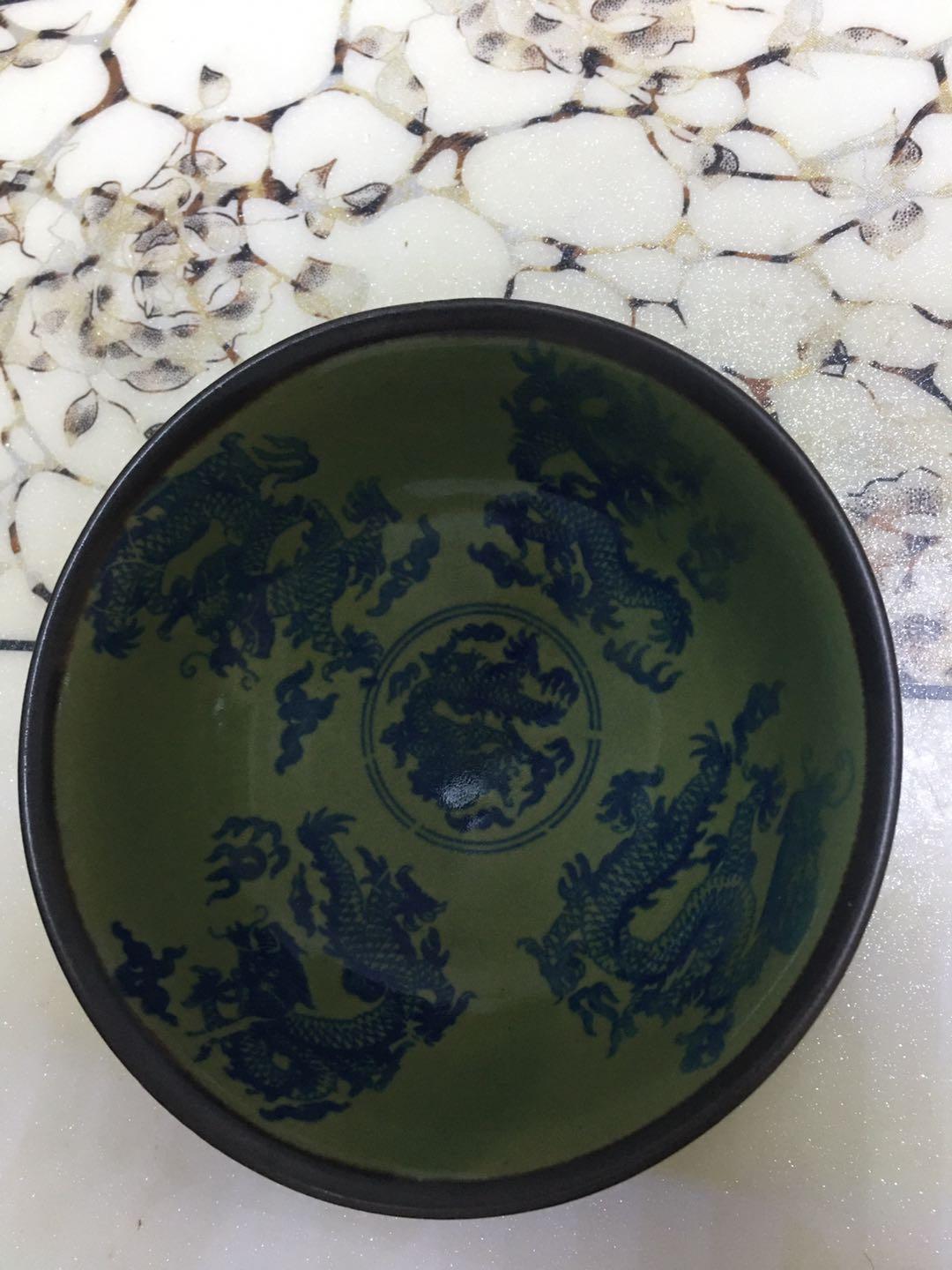
五龙是古中国神话传承的五行思想体现的五个龙,即青龙、赤龙、黄龙、白龙、黑龙。
也指远古时代神话传说的五大部落首领。
分别为皇伯、皇仲、皇叔、皇季、皇少。
也指道教五行神。
也指誉称同时以才名著闻的五人。
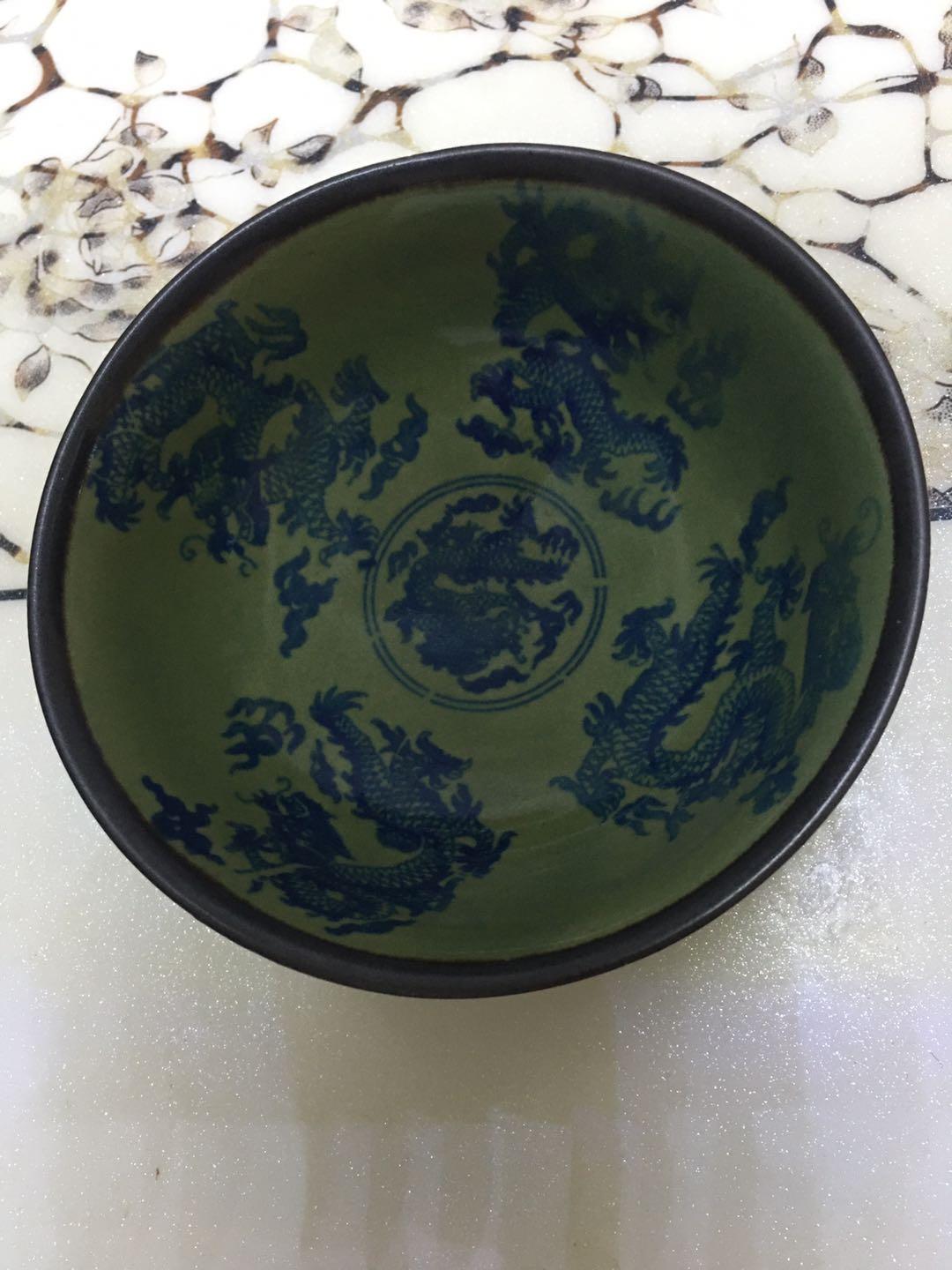
誉称同时以才名著闻的五人。
(1)指 汉 公沙穆 五子。
[晋]陶潜《集圣贤群辅录下》“公沙绍 字 子起 ,绍 弟 孚 字 允慈 ,孚 弟 恪 字 允让 ,恪 弟 逵 字 义则 ,逵 弟 樊 字 义起 ,右 北海 公沙穆 之五子,并有令名,京师号为 公沙 五龙。
”
(2)指 晋 索靖、氾衷、张甝、索紾、索永 五人。
《晋书·索靖传》:“ 靖 少有逸羣之量,与乡人 氾衷 、张甝 、 索紾 、 索永 俱诣太学,驰名海内,号称 敦煌 五龙。
”
(3)指 南朝 齐 张岱 兄弟五人。
《南齐书·张岱传》:“ 岱 少与兄太子中书舍人 寅 、 新安 太守 镜 、征北将军 永 、弟 广州 刺史 辨 ,俱知名,谓之 张氏 五龙。
”
(4)指十六国 前凉 辛攀 兄弟五人。
唐 杨炯 《原州百泉县令李君神道碑》:“若夫 于公 之宅,驷马高驱, 辛氏 之门,五龙齐驾。
” 宋 王应麟 《小学绀珠·氏族·五龙》:“ 凉 辛攀 ,兄 鉴 、 旷 ,弟 寳 、 迅 。
”
(5)指 宋 窦仪 兄弟五人。
《宋史·窦仪传》:“ 仪 学问优博,风度峻整,弟 俨 侃 偁 僖 ,皆相继登科……当时号为 窦氏 五龙。
”
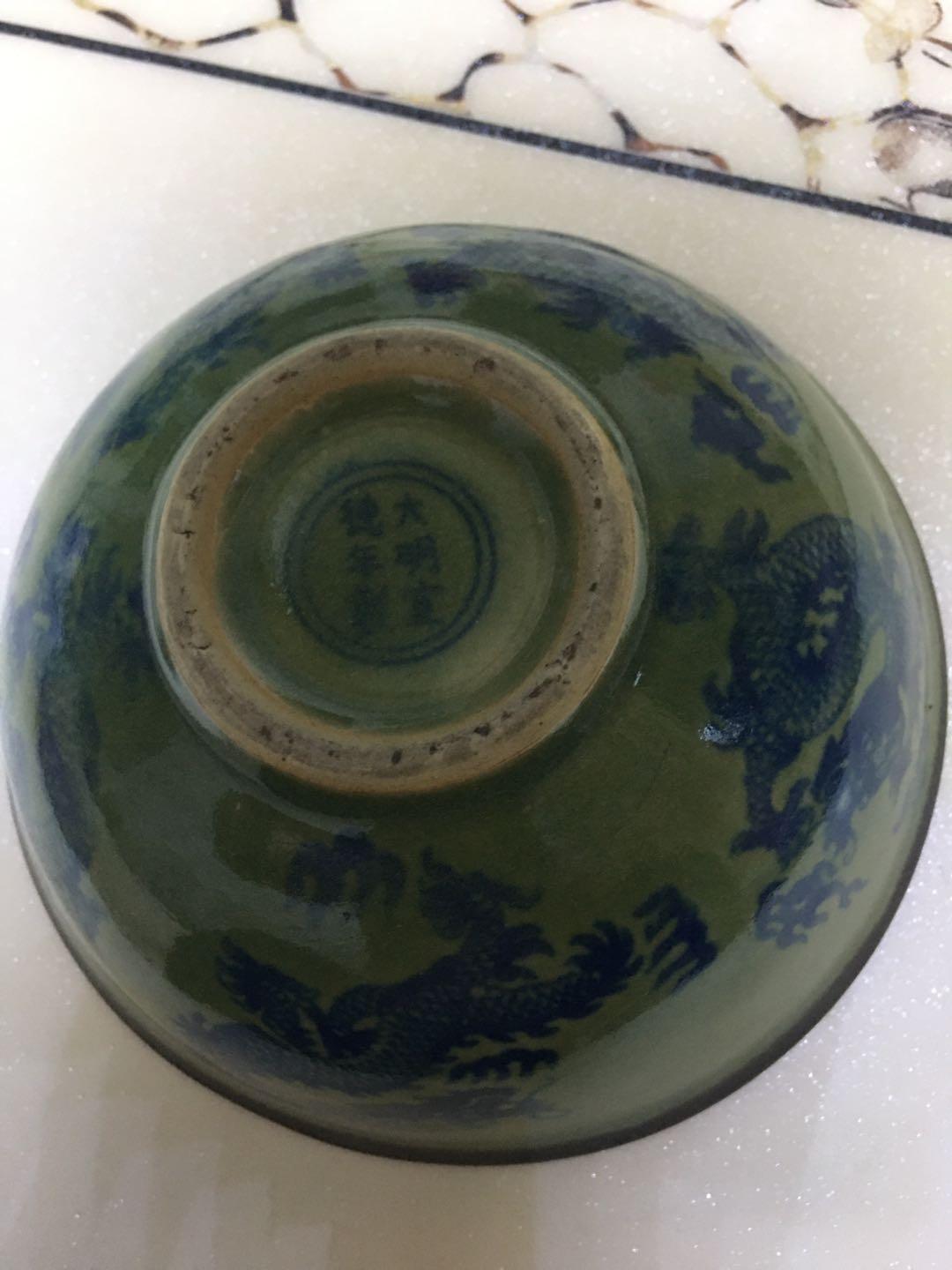
圈足氧化发黄,是由于瓷土中含有微量铁元素长时间氧化所致,为开门老瓷器的特征,足内落款大明宣德年制款,落款规整,在这里的五龙主要是对自己后代的一种期望,希望自己的孩儿能所作为,龙纹周边为山字形的火焰纹,而火龙也是皇上的象征,由五爪可以看出看,这件瓷器身价不菲,且品相十分完美,无磕无残,具有极高的
钧窑。
是宋瓷五大名窑之一。
均窑有唐均,宋均,金均,元均,明均之分。
钧瓷与其他瓷器一样,由陶器演变而来,是对陶器的继承和延续。
根据考古发现和对现存古钧瓷的研究,古代钧瓷的器型大体可以分为两类:一类为日用生活器皿类器型,另一类为陈设类器型。
有的专家认为,以碗、盘、碟、炉、鼎等民间日常用器为主的俗称民钧。
与此对应的,是以花盆、洗、尊、瓶等为主的造型,俗称官钧。
官钧瓷器,造型大雅,窑变美妙,被认为钧瓷中的珍品。
流传于世的官钧瓷器十分稀少,主要世界范围内公私
藏品介绍
中文名称:均窑方耳三足炉
英文名称:Square ear tripod furnace
类别:瓷器
规格:一件
品相:美品
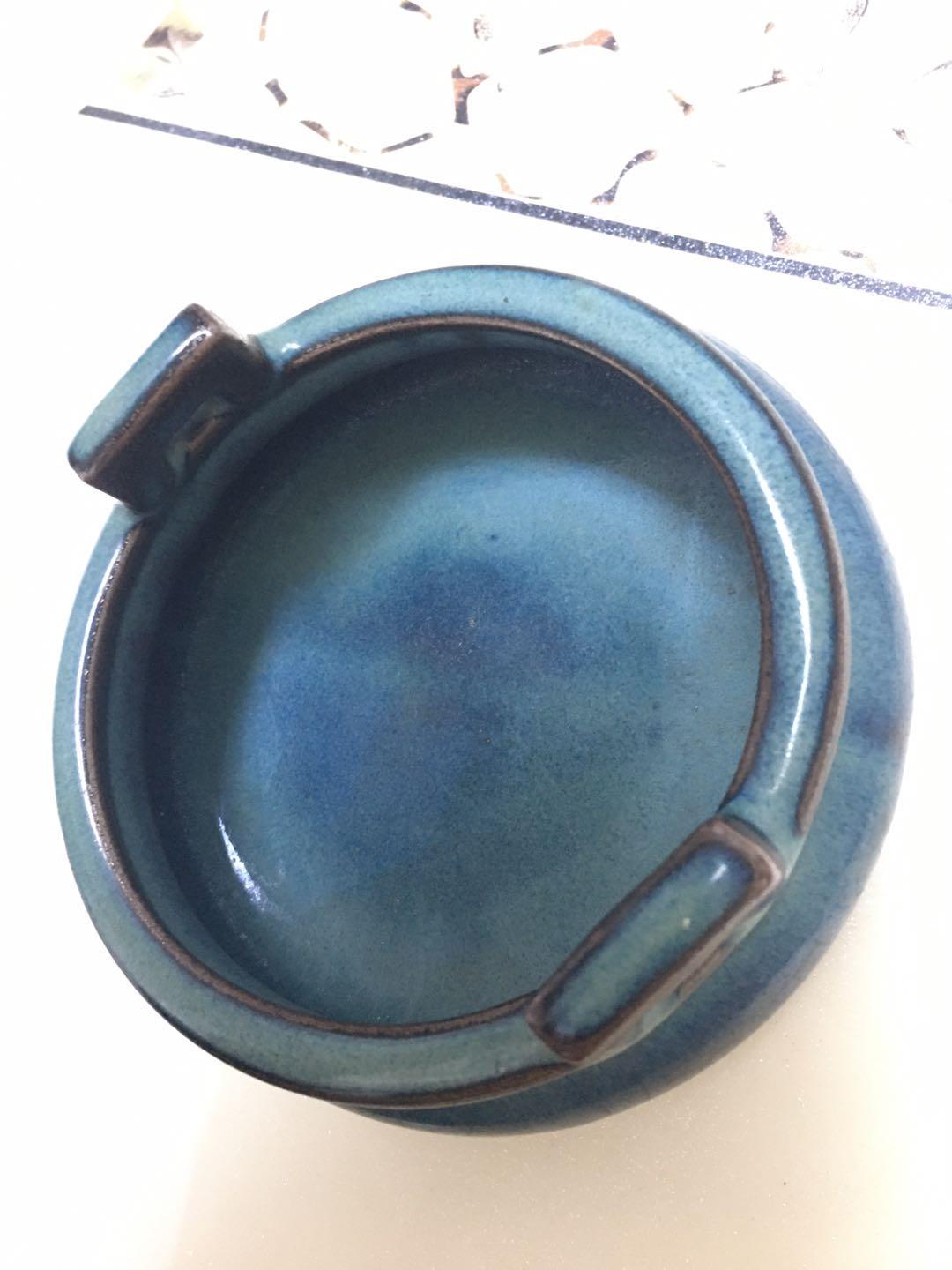
这只均窑方耳三足炉,造型古朴大气,胎骨厚重,表面有如酥油一般的光泽,温润如玉,方耳炉的造型是来自于青铜鼎,其耳还保存了青铜鼎的造型,器型古朴优美。
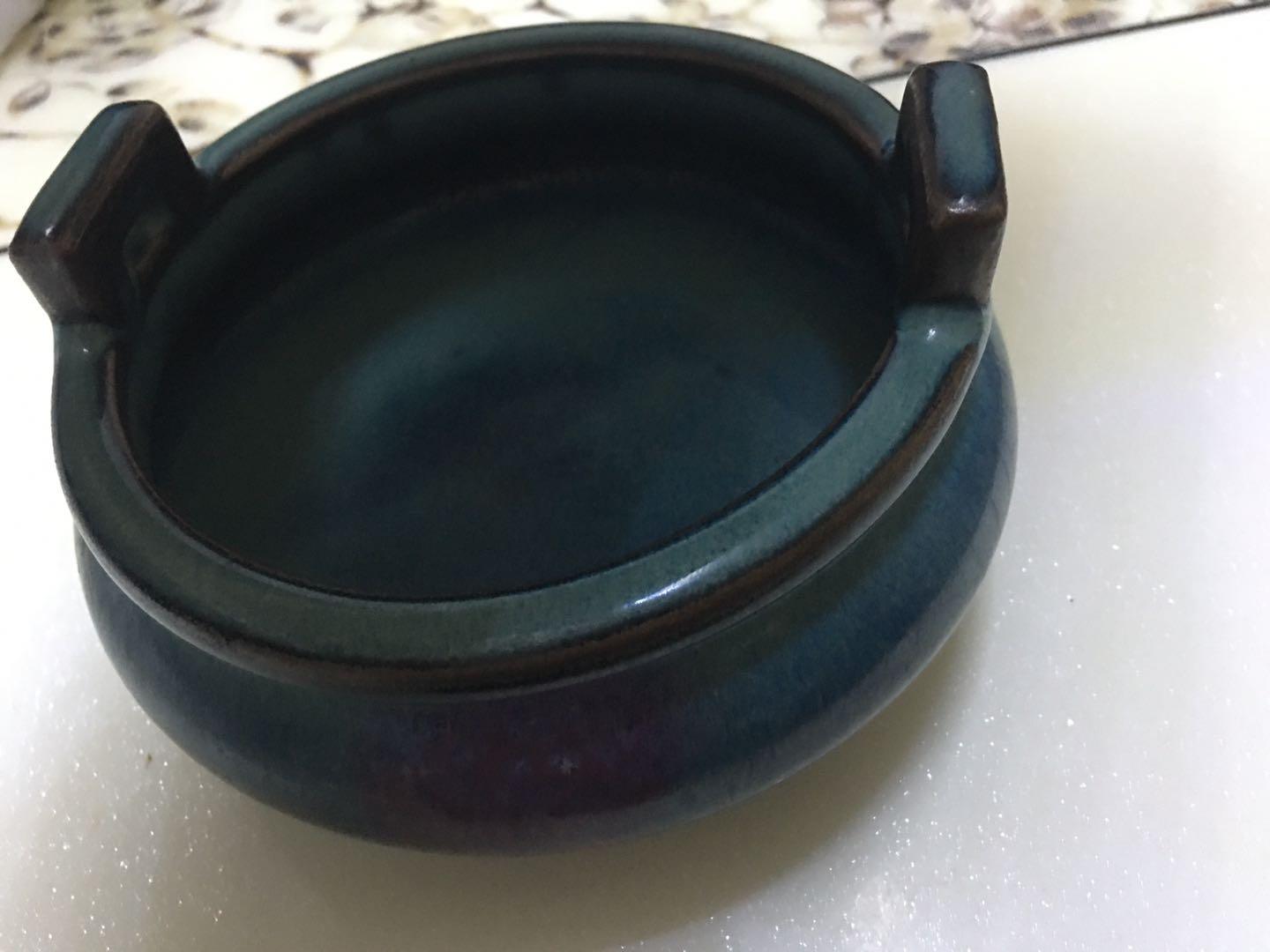
可以看见口缘,边缘处有明显的脱釉而形成的,露出其胎底之色,为氧化铁色,釉面在光泽下呈现漫反射光泽,火光尽褪,无任何贼光,口缘可见轻微脱釉情况,符合均窑特征。
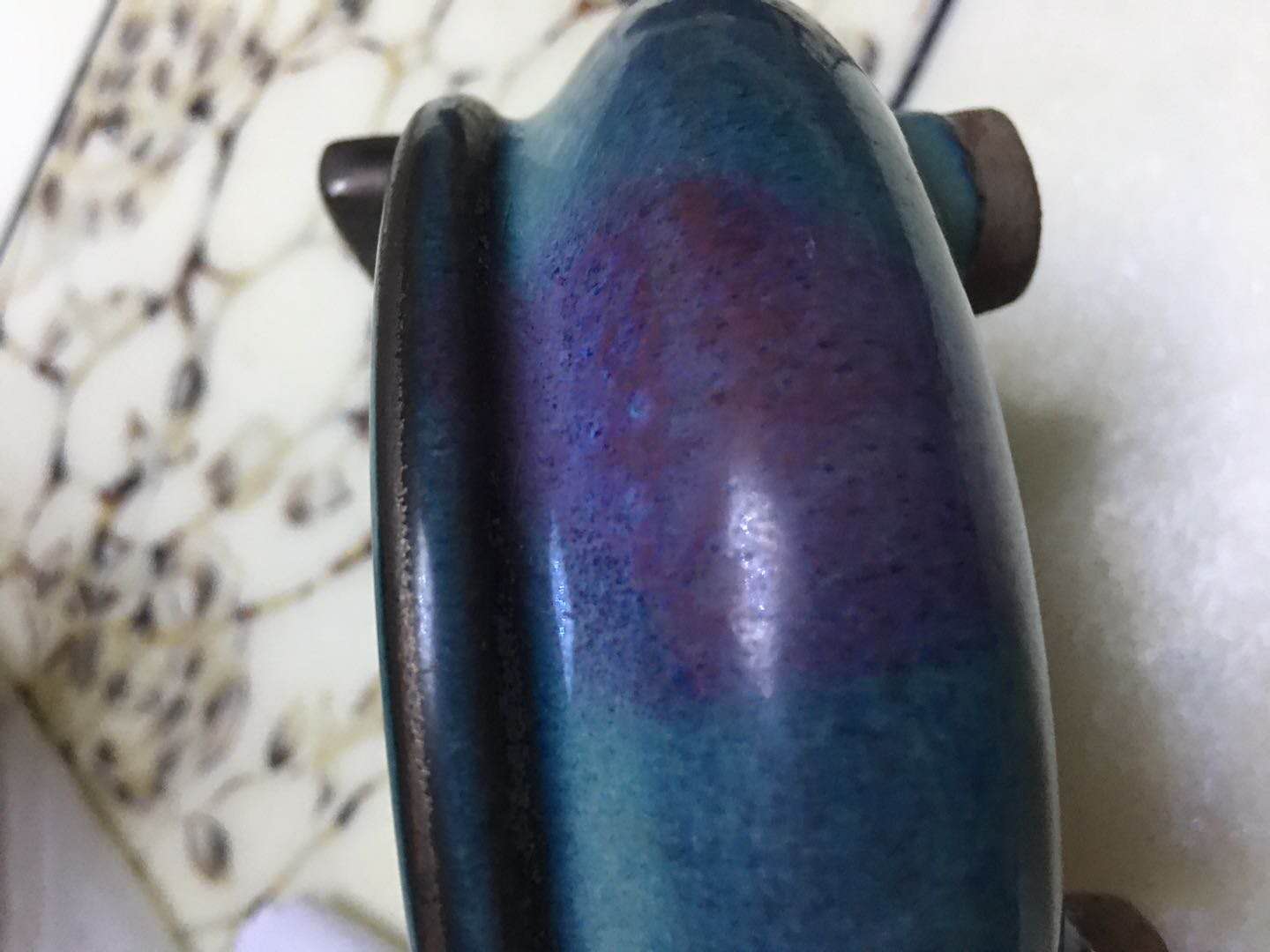
钧窑是我国宋代五大名窑之一,它不仅造型端庄沉稳,而且釉色古朴凝重,变幻莫测,多种窑变釉为其他窑口所不及。
钧釉有高温一次烧成,也有二次烧成,第一次素烧,出窑后施釉彩,二次再烧。
钧瓷的釉色为一绝,千变万化,红、蓝、青、白、紫交相融汇,灿若云霞,这是因为在烧制过程中,配料掺入铜的氧化物造成的艺术效果,此为中国制瓷上的一大发明,称为“窑变”。
这件瓷器窑变明显,局部出现红色。
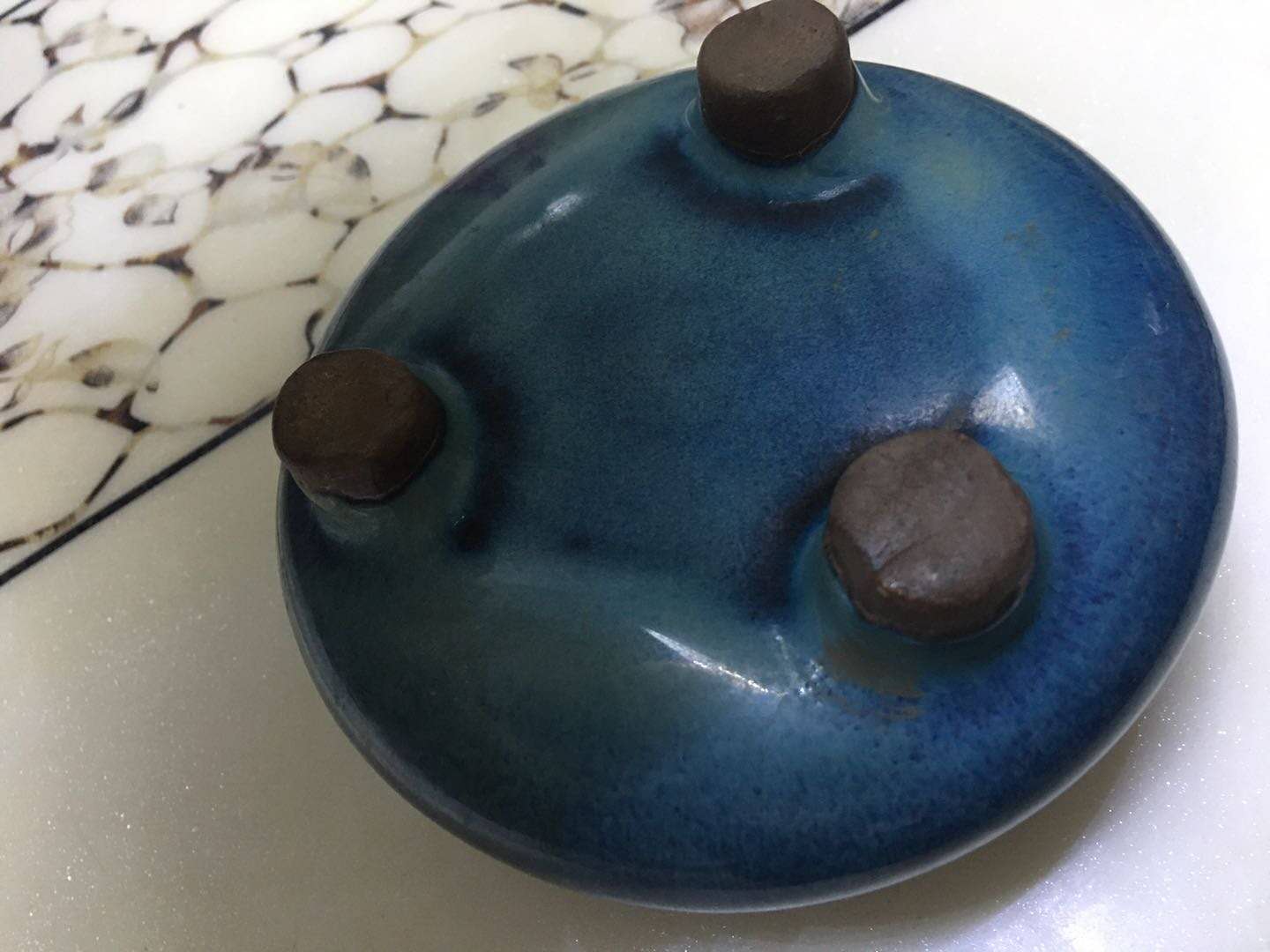
喜欢瓷器的人都知道,作为宋代五大名窑之一,钧窑烧制的瓷器以釉色艳丽多变而著称。
北宋的钧窑非常名贵,自古以来就有“黄金有价‘钧’无价”、“纵有家产万贯,不如钧瓷一件”的说法。
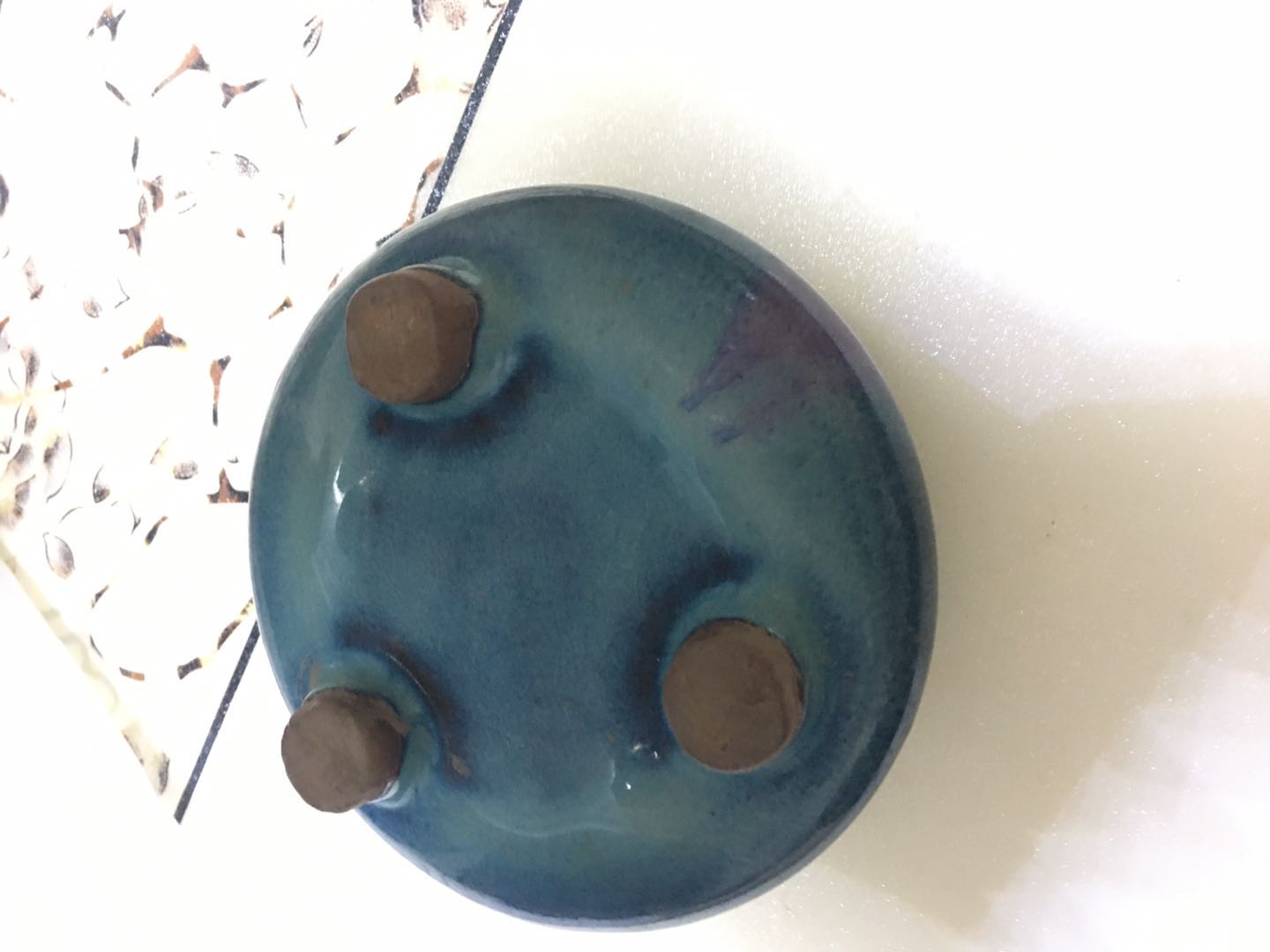
钧窑是我国宋代五大名窑之一,它不仅造型端庄沉稳,而且釉色古朴凝重,变幻莫测,多种窑变釉为其他窑口所不及。
钧釉有高温一次烧成,也有二次烧成,第一次素烧,出窑后施釉彩,二次再烧。
钧瓷的釉色为一绝,千变万化,红、蓝、青、白、紫交相融汇,灿若云霞,这是因为在烧制过程中,配料掺入铜的氧化物造成的艺术效果,此为中国制瓷上的一大发明,称为“窑变”。
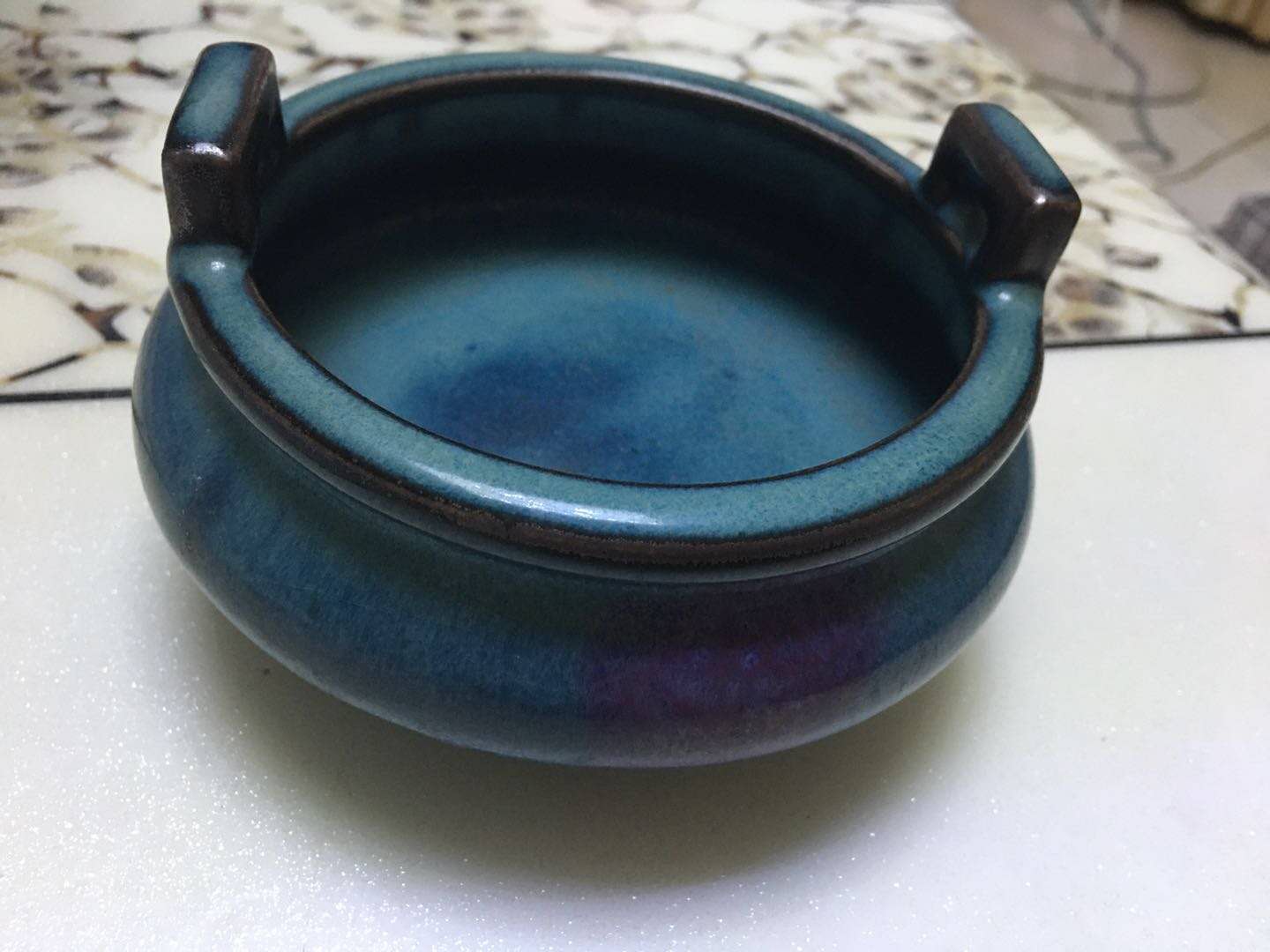
此均窑为均窑之上品的天蓝釉均窑,颜色姹紫嫣红,在放大镜下有如日出蓝天一般的美丽,蓝紫相间颜色层次丰富,此方耳炉无磕,无残,无穿线,品相完美,俗话说旧器如新就是宝,这件五大名窑之一可以说是稀世珍宝,为罕见的镇馆级藏品,具有不可估量的
“哥窑”名列宋代五大名窑,在陶瓷史上有举足轻重的地位。
哥窑胎多紫黑色、铁黑色、也有黄褐色。
釉为失透的乳浊釉,釉面泛一层酥光,釉色以炒米黄、灰青多见,釉面大小纹片结合。
经染色后大纹片呈深褐色,小纹片为黄褐色,也称‘金丝铁线’“墨纹梅花片”“叶脉纹”‘文武片’等。
这是传世哥窑的主要特征之一。
器形有各式瓶、炉、尊、洗及碗、盆、碟等。
多见仿古造型,底足制作不十分规整,釉面常见缩釉和棕眼。
而《中国陶瓷史》这样叙述:
造型有各式瓶、炉、洗、盘、罐等。
论胎有厚薄之分,其胎质有瓷胎和砂胎两种,胎色有黑灰、深灰、浅灰、土黄多种色调,釉色也有粉青、月白、油灰、青黄各色。
从时间上讲,这里应有早晚之别,从产地说也有恐非一个瓷窑的作品,情况是比较复杂的。
记载“哥窑”的古文献主要有:元代的《至正直记》,明代的《格古要论》、《遵生八笺》,清代的《博物要览》以及明代的《浙江通志》等。
但究竟哥窑窑址何在?性质如何?一直是陶瓷史研究中众说纷纭、悬而未决的问题。
流传于世的“哥窑”经典器大多源自清宫旧藏,由于这批器物与古文献中的记载的“哥窑”特征不符,而且没有考古资料佐证,因而造成了中国陶瓷史上最大的悬疑。
为区别于明、清文献中所记载得哥窑(龙泉章生一窑),宫中名为“哥窑”的传世品,后世鉴赏家称其为“传世哥窑”。
琮式瓶始见于宋,一般认为始出现于南宋,但是现已发现,自北宋以来就有琮式瓶的生产。
宋代盛行仿古之风,这种瓶式系仿照新石器时代良渚文化的玉琮外形加以变化而成。
南宋官窑、龙泉窑均有这种器形。
藏品介绍
中文名称:哥窑琮式瓶
英文名称:Ge kiln cong - shaped bottle
类别:瓷器
规格:一件
品相:美品
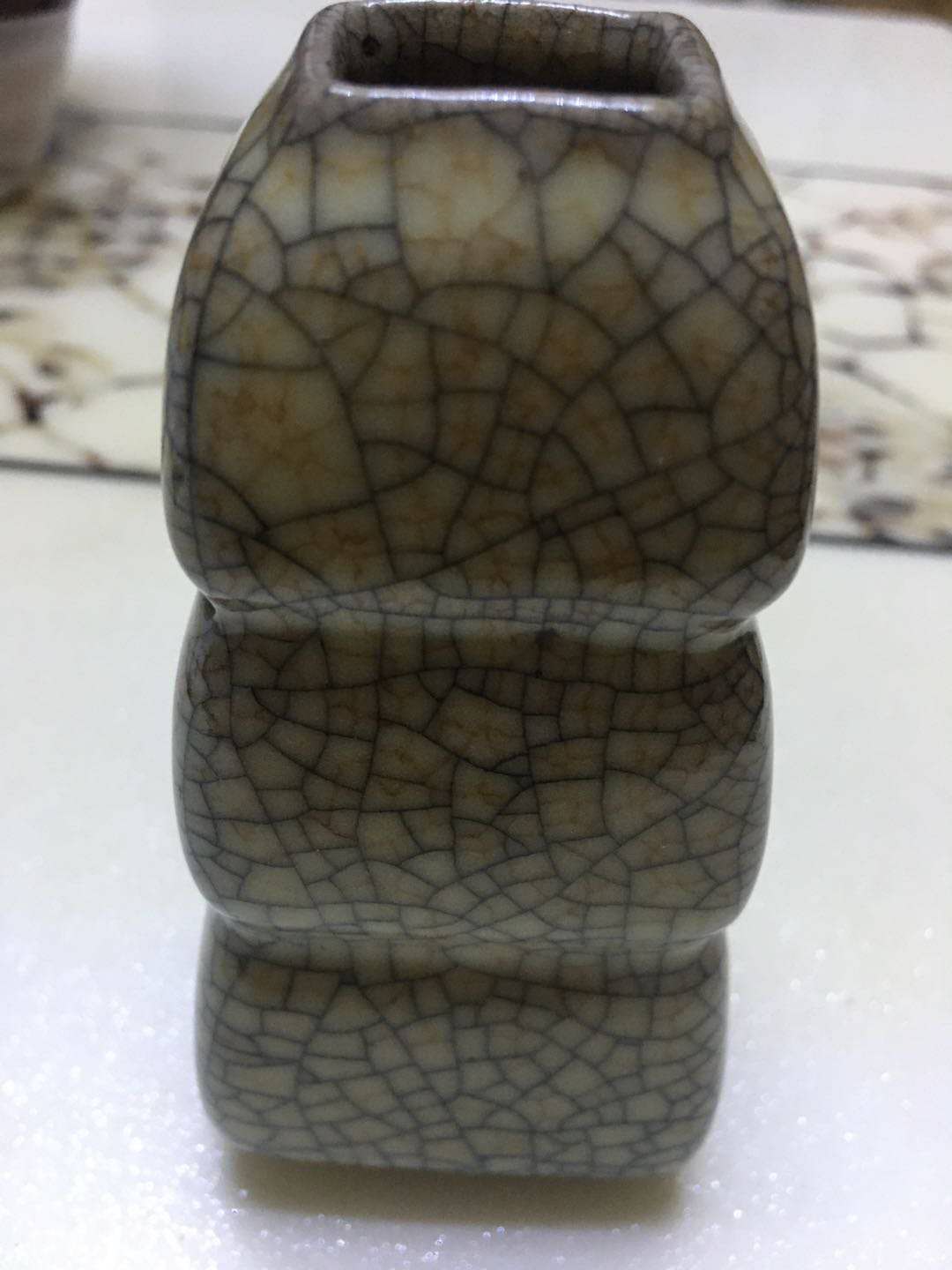
这件哥窑金丝铁线特征极其明显,典型,可以看到这件器型独特,是特殊的琮式瓶,所谓的琮式瓶就是由玉琮而传承下来的,釉面在自然光线下出现了漫反射,有如绸缎一般,美轮美奂,古朴典雅,端庄大气,是难得的馆藏级藏品。
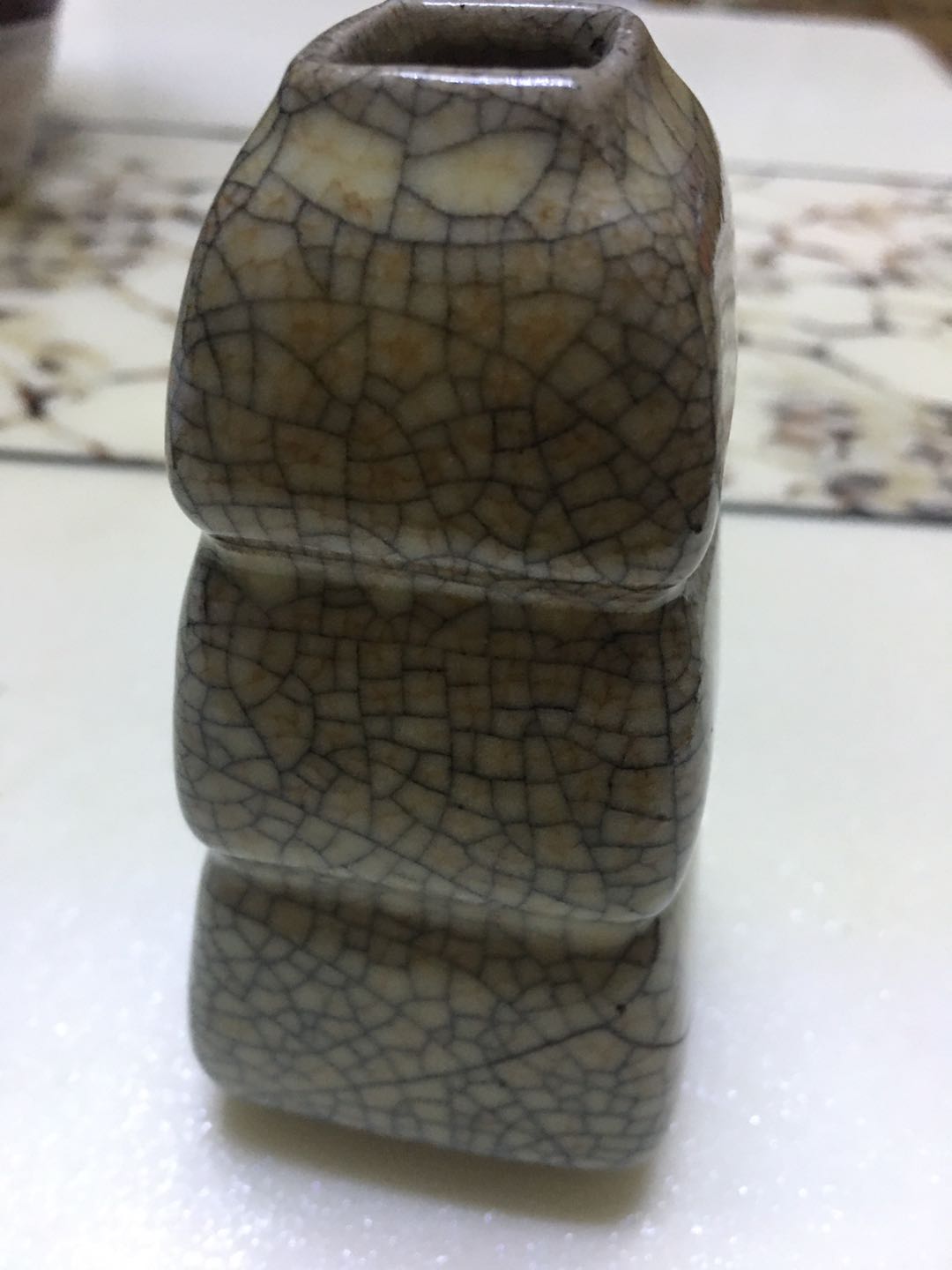
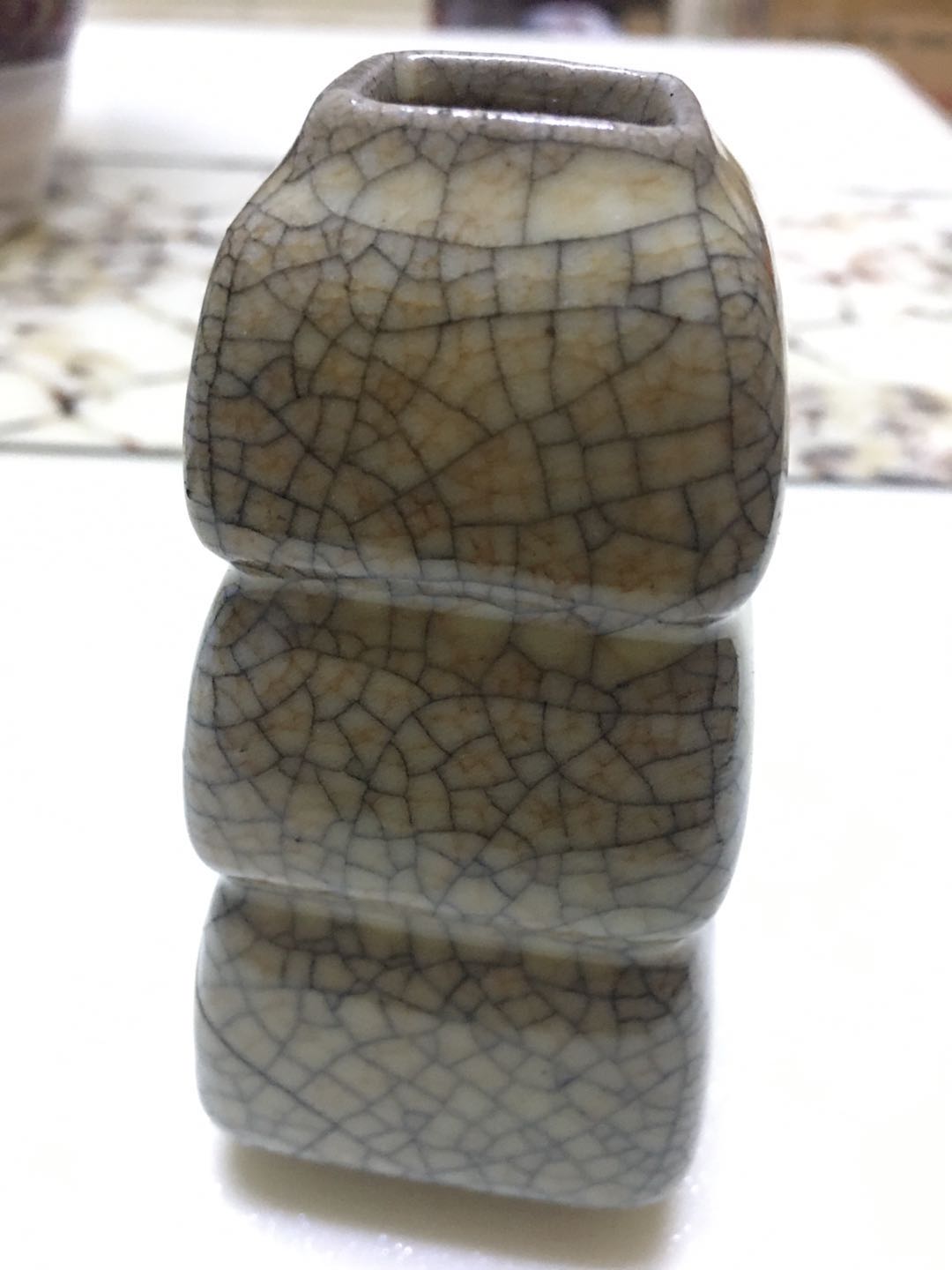
上图可以看到金黄色的开片纹路,被称为金丝,结合黑色的开片纹路,被称为哥窑的典型特征,金丝铁线。
“金丝铁线”:哥窑瓷器釉面裂纹的专有称谓。
传世哥窑瓷器的釉层肥腴,开细碎片纹。
纹路分两种:一种是釉裂形成大开片的黑色纹路,俗称“铁线”;另一种是釉裂形成小开片的金黄色纹路,俗称“金丝”,合而即有“金丝铁线”之美称。
其形成的原因是由于坯体与釉的膨胀系数不同,在窑内冷却的过程中釉因收缩率大而开裂。
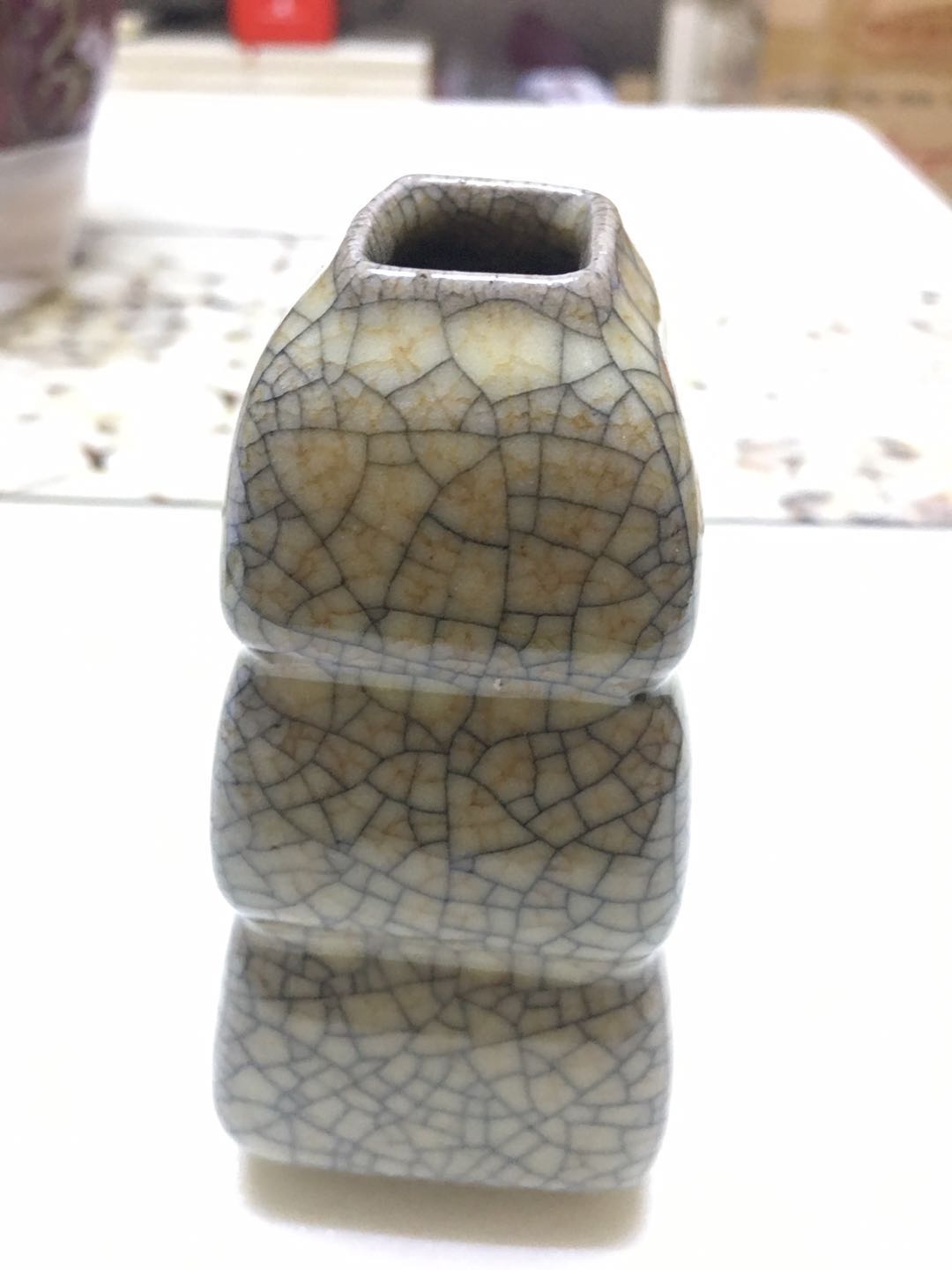
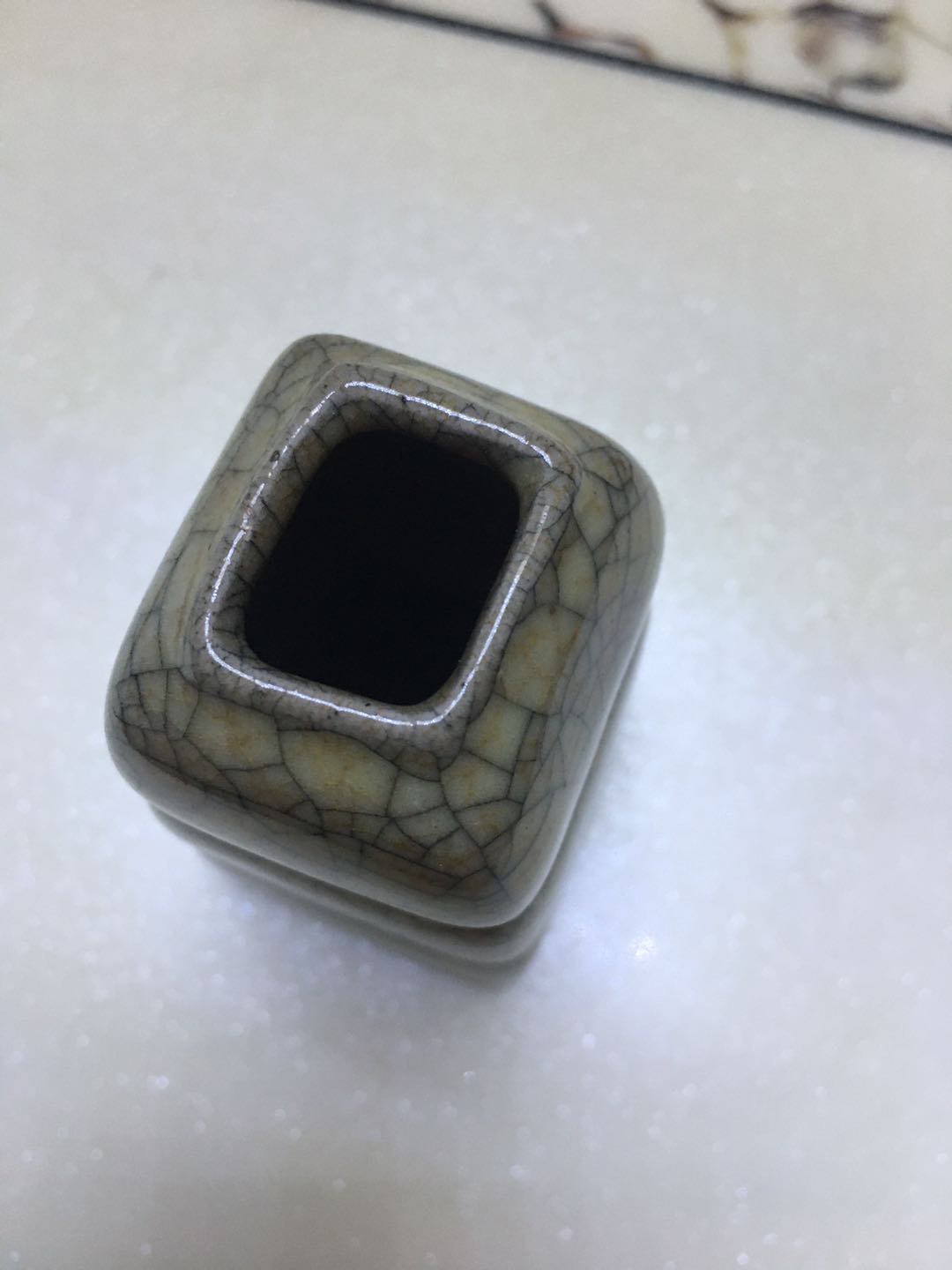
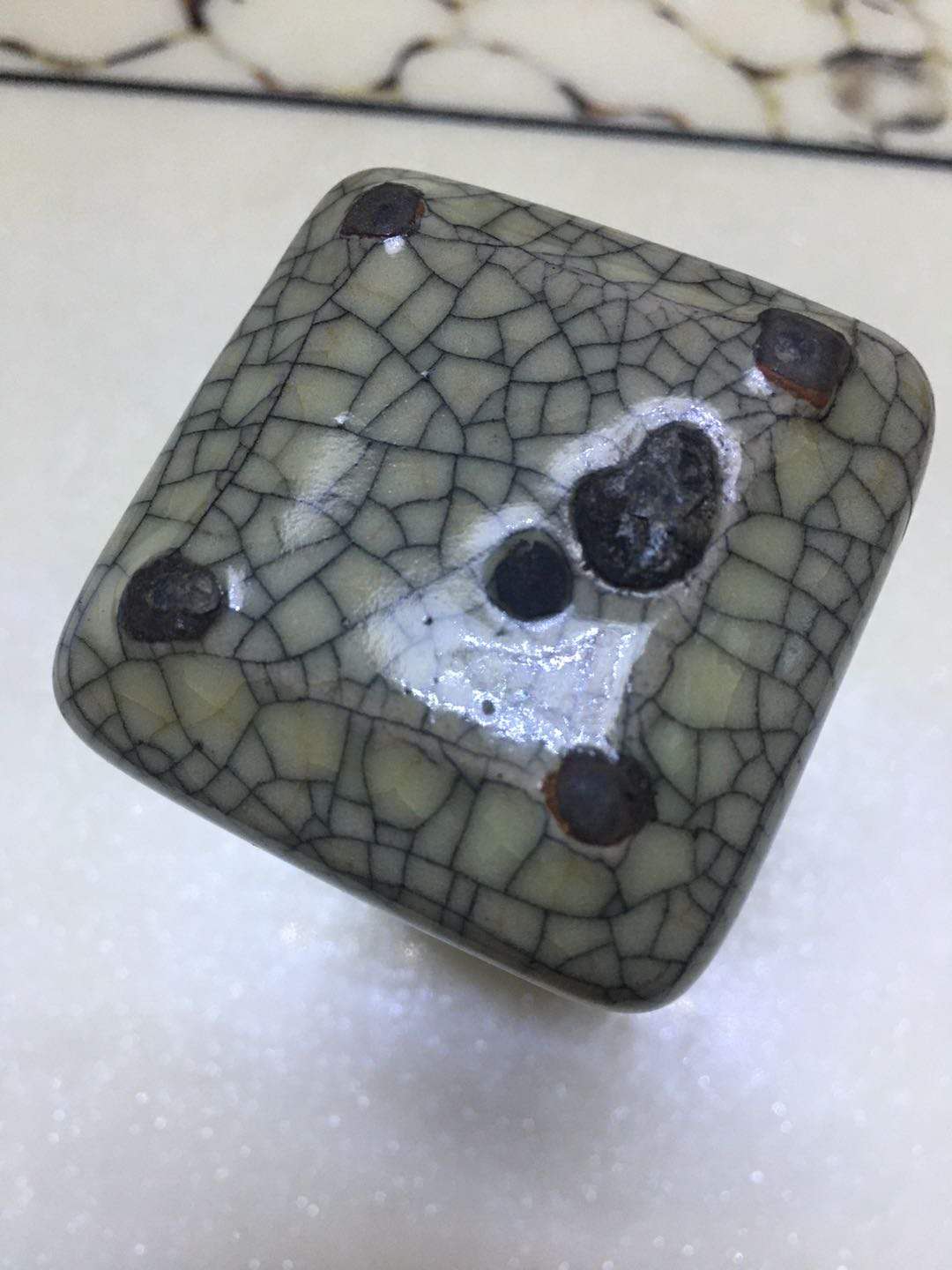
方足支痕有如生锈的铁足一般,这就是哥窑的铁足特征,再看釉面,哥窑釉属无光釉,犹如“酥油”般的光泽,十分的温润。
哥釉瓷的重要特征是釉面开片,这是发生在釉面上的一种自然开裂现象。
开裂原本是瓷器烧制中的缺陷,后来人们掌握了开裂的规律,有意识地让它产生开片,从而产生了一种独特的美感。
宋代哥釉瓷釉质莹润,通体釉面被粗深或者细浅的两种纹线交织切割,术语叫作“冰裂纹”,俗称“金丝铁线”。
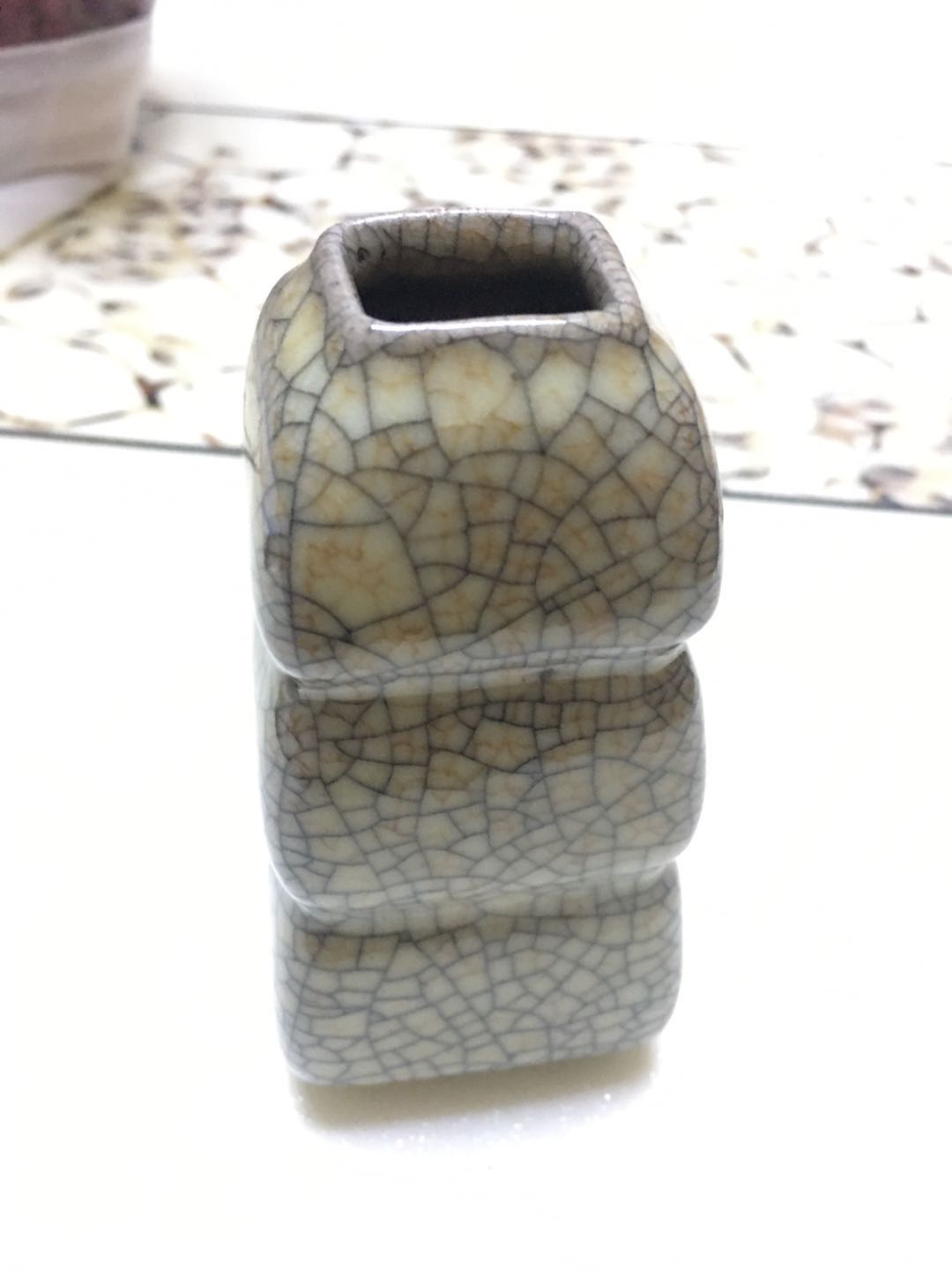
这件哥窑琮式瓶,不仅无磕,无残,无穿线,而且都是金丝,十分优美,加上这一铁足开门到代,十分难得,琮式瓶最早是从远古部落时期的石琮演变而来的,当时的部落用玉或者石头制成外方内圆的护腕,用来保护手臂,也可以防止猛兽的撕咬,所以这件瓷器具有着极高的文化研究价值。
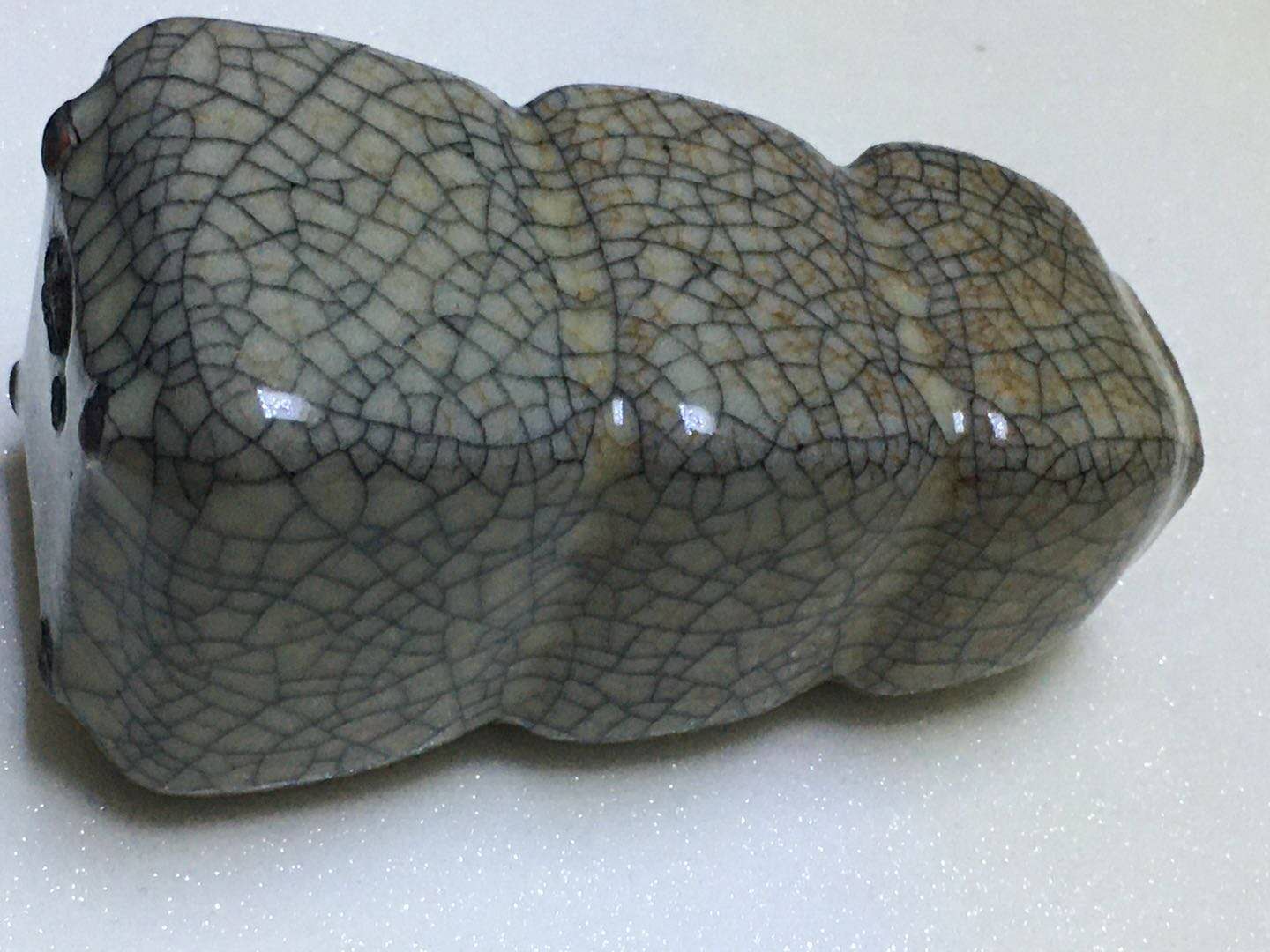
哥窑作为五大名窑之一,在电视剧正阳门下突出哥窑的地位,更是超越了汝窑器,是各大拍卖公司压轴重器,只有宋代哥窑,不远千里,斥巨资也要拿到手,因为目前的哥窑器是比大熊猫还稀有了,是瓷器
英文翻译:Blue and white porcelain, also known as white blue and white porcelain, is often referred to as blue and white porcelain. It is one of the mainstream varieties of Chinese porcelain, and belongs to underglaze color porcelain. Blue and white porcelain is made of cobalt ore containing cobalt oxide as raw material, which is decorated on the ceramic body, then covered with a layer of transparent glaze, and fired by a high temperature reduction flame. Cobalt material is blue after burning, with strong coloring, bright hair color, high burning rate and color stability. The original blue and white porcelain appeared in The Tang and Song dynasties, while the mature blue and white porcelain appeared in the Hutian kiln of Jingdezhen in the Yuan Dynasty. The blue and white of Ming Dynasty became the mainstream of porcelain. It reached its peak during the Kangxi period of qing Dynasty. In the Ming and Qing Dynasties, it also created blue-and-white colorful, malachite-green glaze blue-and-white, soya-green glaze blue-and-white, blue-and-white red, yellow-ground blue-and-white, blue-and-white and other derivative varieties.
The collection is introduced
Chinese name: blue and white dragon bowl
English name: Blue and White Dragon Bowl
Category: Porcelain
Specification: one piece
Appearance: Beautiful
The five Dragons are the five elements embodied in the ancient Chinese mythology, namely, the green Dragon, the Red Dragon, the Yellow Dragon, the white dragon and the black dragon.
Also refers to the chief of the five great tribes of ancient mythology. They were Emperor Bo, Emperor Zhong, Emperor Shu, Emperor Ji, emperor Shao.
It also refers to the Five elements of Taoism.
Also refers to the reputation of the famous at the same time to hear the five people.
Reputation at the same time to the classic heard of five people.
(1) Refers to the fifth son of Han Gong Shamu. [Jin] Tao Qian&34;Gong Shashao styled himself Zi Qi, Shao Di Fu styled himself Yun Ci, Fu Di styled himself Yun Rong, Ke Di styled himself Yi Ze, Kui styled himself Yi Qi, the fifth son of Gong Sha Mu of the North Sea, and had his official name, the capital was gong Sha Wu Long.&34;The Book of Jin · SuoJing biography&34;jing from group of rare, and fellow villager extensive applications, zhang Han, suo 紾, SuoYong notions of the imperial college, map, famous dunhuang wulong.&34;Biography of Zhang Dai from The Book of Southern Qi&34;Dai Shao and his elder brother Yin, the prince of the middle school, jing, the prefect of Xin &39;s Five dragons.
(4) refers to five brothers named Liang Xinpan before the sixteen Kingdoms period. Tang Yangjiong, &34; : &34; &34; in Song Wang Yinglin&34;A Primary School&34;.
(5) Refers to the five brothers of Song Dou Yi. Biography of Dou Yi of Song History: &34;
Yellow ring foot oxidation, is due to the China clay containing trace iron oxidation caused by, for a long time to open the door of old porcelain features, foot, dated within da Ming xuande years, inscribe neat, wulong here is mainly to their offspring of a kind of expectation, hope their child can have, as for surrounding the dragon mountain glyph flame grain, and fire dragon is the symbol of the emperor, can be seen from five claws, the porcelain expensive, and the appearance is very perfect, no upon no residual, has a very high collection value.
The pa per. It is one of the five famous song porcelain kilns. All kilns have tang, Song, Jin, Yuan, Ming. Jun porcelain, like other porcelains, evolved from pottery and was the inheritance and continuation of pottery. According to archaeological findings and research on extant jun porcelains, the types of ancient Jun porcelains can be generally divided into two categories: one is household ware type, and the other is furnishings type. Some experts believe that the bowl, dish, dish, stove, tripod and other civilian daily utensils commonly known as minjun. Corresponding to this, it is based on flowerpot, wash, zun, bottle and other modeling, commonly known as guan Jun. Guan Jun porcelain, elegant shape, wonderful kiln, jun porcelain is regarded as the treasures. Official jun porcelain is very rare in the world. It is mainly collected in The National Palace Museum in Beijing, the National Palace Museum in Taipei, freer Art Museum in the United States, Sackler Art Museum in Harvard University and other places. There are only a few hundred pieces of official and jun porcelain in public and private collections around the world, which are very precious.
The collection is introduced
Chinese name: square ear tripod furnace
2. Square Ear Tripod Furnace
Category: Porcelain
Specification: one piece
Appearance: Beautiful
The square ear tripod is simple in shape, thick in weight, glossy in surface like butter, warm and smooth as jade. The shape of the square ear furnace comes from the bronze tripod, and its ear has preserved the shape of the bronze tripod, which is simple and beautiful in shape.
It can be seen that the mouth edge is formed by obvious deglaze at the edge, revealing the color of the tire bottom, which is the color of iron oxide. The glaze shows diffuse reflection luster under the gloss, and the fire fades away without any light. The mouth edge can be seen with slight deglaze, which conforms to the characteristics of all kilts.
Jun kiln is one of the five famous kilns of Song Dynasty in China. It not only has a dignified and calm shape, but also has a dignified and unsophisticated glaze, which is unpredictable. Jun glaze has a high temperature firing, but also a second firing, the first plain firing, out of the kiln after glaze color, second firing. Jun porcelain&34;kiln transformation&34;Jun is priceless when gold is valuable&34;even if you have a family of thousands of dollars, jun porcelain is not as valuable as one&39;s glaze color is unique and ever-changing, with red, blue, green, white and purple blending into each other and glittering like clouds. This is because of the artistic effect caused by mixing copper oxide in the firing process, which is a great invention in Chinese porcelain making and is called &34;.
This all kiln for all of the top grade of shamrock glaze kiln, the color purple, under a magnifying glass as beautiful as sunrise, blue sky, blue and purple color rich layers, the ears on the furnace without, no residue, no thread, quality perfect, as the saying goes, old apparatus such as new is treasure, one of the five ancient jun can be said to be the rare treasures, is rare, collection, and has immeasurable value for collection.
&34; is one of the five famous kilns in the Song Dynasty and has a pivotal position in the history of ceramics. Ge Kiln fetus more purplish black, iron black, there are also yellow-brown. Glaze is opaque glaze, glazed with a layer of crisp light, the glaze color to Fried rice yellow, gray and green, the size of the glaze grain combined.
After dyeing, the large grain is dark brown, while the small grain is yellowish brown, also known as &34;, &34;, &34;, &34; and so on. This is one of the main features of the ancient Kiln. In the shape of various bottles, stoves, zun, washing and dishes, basins, dishes, etc. See archaize modelling more, bottom foot is made not very neat, glaze is common shrink glaze and palm eye.
The history of Chinese Ceramics is described as follows:
There are all kinds of bottle, stove, wash, dish, pot and so on. The thickness of the fetus is divided into two types: porcelain fetus and sand fetus. The color of the fetus is black gray, dark gray, light gray and yellow. The glaze color is also pink, white, putty and yellow. In terms of time, there should be a difference between the morning and the evening. From the origin, there are also some works of porcelain kiln. The situation is quite complicated.
The main ancient documents recording &34; include zhi Zhi Ji in the Yuan Dynasty, Ge Gu Yao in the Ming Dynasty, Zunsheng Bajian, Natural History In the Qing Dynasty and Zhejiang Tongzhi in the Ming Dynasty. But where exactly is the Kiln? What is the nature? It has been a controversial and unresolved issue in the research of ceramic history.
Most of the classic ware of &34; that circulated in the world came from the old collections of the Qing Palace. Because these objects did not conform to the characteristics of &34; recorded in the ancient documents, and there was no archaeological data to support it, this caused the biggest mystery in the history of Chinese ceramics.
In order to be different from the Ancient Ge Kiln (Longquan Zhangshengyi Kiln) recorded in Ming and Qing literature, the ancient ware named &34; was handed down in the palace, and later connoisseurs called it &34;.
Cong bottles were first seen in the Song Dynasty and are thought to have appeared in the Southern Song Dynasty, but they have been found in production since the Northern Song Dynasty. In the Song Dynasty, the wind of the imitation of the ancient, the vase system imitates the shape of the Jade cong of the Liangzhu culture in the Neolithic age. The Southern Song Dynasty royal kiln, longquan kiln have this kind of vessel shape.
The collection is introduced
Chinese name: Ge Kiln cong - type bottle
Ge Kiln Cong-Shaped Bottle
Category: Porcelain
Specification: one piece
Appearance: Beautiful
This elder brother kiln gold wire features extremely obvious, typical, you can see the shape is unique, is a special cong type of bottle, the bottle is passed down by jade cong cong type, glaze appeared in the natural light offline diffuse, like silks and satins, beautiful, of primitive simplicity and elegant, elegant atmosphere, is the rare class library collection.
As can be seen in the figure above, the golden sliver pattern, known as the gold wire, combined with the black sliver pattern, known as the typical feature of Ge Yao, the gold wire and iron wire.
&34; : the name of glaze crack in Ge Kiln porcelain. Handed down ge Kiln porcelain glaze layer fat, open finely grain. There are two kinds of grain: one is the black grain formed by the crack of glaze, commonly known as &34;; The other is the golden grain formed by the cracks of the glaze, commonly known as &34;, which is called &34;. The reason for its formation is that the expansion coefficient of the blank body is different from that of the glaze, and the glaze cracks due to the large shrinkage rate during the cooling process in the kiln.
This is the characteristics of Ge Yao&34;butter&34;ice crack&34;gold wire&34;.
This elder brother kiln cong type bottle, not only no depletion, no residue, no thread, and gold, is very beautiful, add enough to open the door to the generation of the iron, very rare, cong type bottle first evolved from ancient tribes Shi Cong, when tribes made of jade and stone round within the foreign wristbands, used to protect the arm, also can prevent the tearing of beasts, so the porcelain has the high culture research value.
Elder brother kiln as one of five ancient jun in the TV series under the qianmen outstanding elder brother kiln status, but also beyond your kiln, jack axis is the auction company, only the elder brother of the song dynasty kiln, miles, denounce is gigantic endowment also want to take it, because the brother kiln is much more than a giant panda is a rare, is the treasure in porcelain collection, be a daughter is easy, the treasure is hard to find.
复制本文链接攻略资讯文章为拓城游所有,未经允许不得转载。